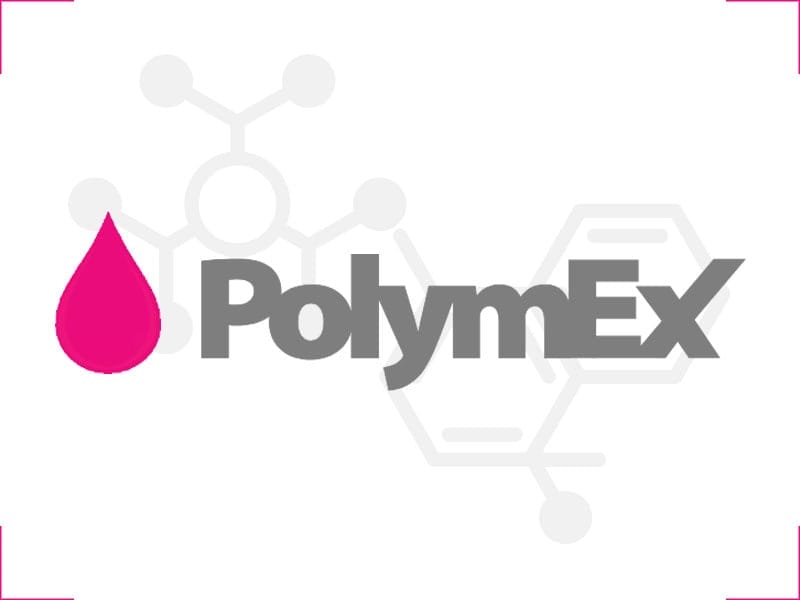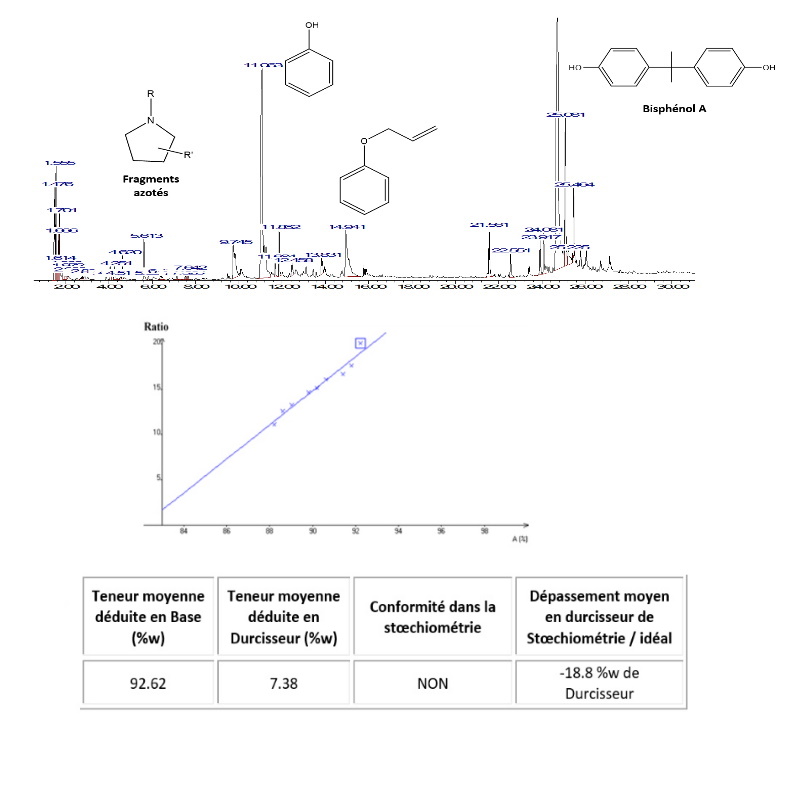Checking the stoichiometry of a two-component epoxy adhesive
This involves determining by Pyrolysis/GCMS the proportion by crosslinking in a two-component epoxy adhesive consisting of an epoxy resin based on DGEBA and a hardener based on aliphatic polyamines .
Indeed, the adhesion properties of such systems are directly proportional to the quality of compliance with the ratio between the Base and the Hardener.
Study of failure phenomena
The first step consists in making a series of "standard" mixtures centered on the ideal Base/Hardener ratio but also including values with excess Base and excess Hardener.
These mixtures are cross-linked according to the manufacturer's specifications (indicated in the Technical Data Sheets, FT), then analyzed by Pyrolysis/GCMS. Each pyrogram of each standard allows to visualize and count organic fragments related to each Part B and D.
The "tracer" fragments of the Base are in this case, compounds based on DGEBA and Bisphenol A, those of the Part D are light nitrogenous compounds with mainly "Alkyls Pyrrole" units. All the areas of the chromatographic peaks (brought back to the mass of analyzed sample) of these compounds resulting from these two families are summed up and will be used to draw the calibration line: Ratio [Base/ Hardener] vs [Base rate %].

 EN
EN
 FR
FR
